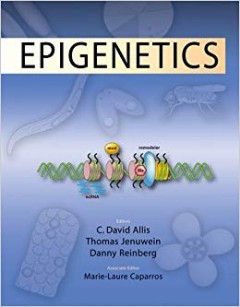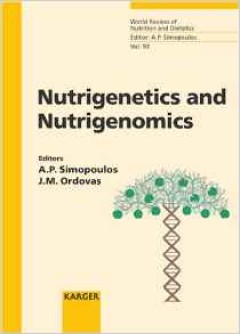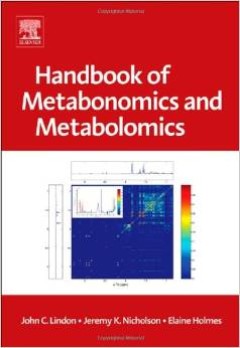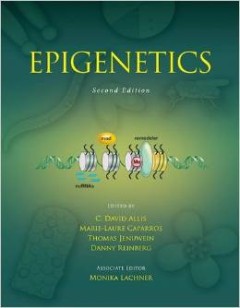Filter by

Effect of refreshed L-DOPA treatment on gene expression, chlorophyll content,…
- Edition
- -
- ISBN/ISSN
- EP069
- Collation
- 31 p. : ill. ; 30 cm.
- Series Title
- -
- Call Number
- EP BT-017
- Edition
- -
- ISBN/ISSN
- EP069
- Collation
- 31 p. : ill. ; 30 cm.
- Series Title
- -
- Call Number
- EP BT-017

The Properties of Daun Dewa as Antiviral Compound
The demand for continuous discovery of novel antimicrobial compounds is still very high, especially considering the pandemic the world has recently faced. Many types of antimicrobials can be found in natural ingredients and the vast biodiversity of Indonesia certainly holds many natural compounds that have the potential to be a new novel antimicrobial compound. Gynura divaricata, or also kn…
- Edition
- -
- ISBN/ISSN
- -
- Collation
- -
- Series Title
- -
- Call Number
- BM 24-044

Effects of Coriander Leaves Extract on GABA Level and GABAA Receptor Gene Exp…
Alzheimer’s disease (AD) is a chronic neurodegenerative disease affecting cognition and memory. The exact cause of AD remains unclear, but two primary theories have been suggested to explain its cause: the cholinergic and amyloid hypothesis. The extracellular deposition of amyloid-beta (Aβ) and intracellular accumulation of phosphorylated tau protein called neurofibrillary tangles (NFTs) …
- Edition
- -
- ISBN/ISSN
- -
- Collation
- -
- Series Title
- -
- Call Number
- PHA 24-007

Investigation of Atopic Dermatitis-related Gene Expression Levels of TNF-?- &…
Atopic dermatitis (AD) is a multifactorial chronic relapsing inflammatory skin disease characterized by flares of pruritic lesions, rashes and lichenification. Skin barrier and immune barrier dysfunction, grouped with genetic predisposition all contribute to the development of AD. Available medications with the purpose of mitigating symptoms and exacerbations provide surface-level therapeuti…
- Edition
- -
- ISBN/ISSN
- -
- Collation
- -
- Series Title
- -
- Call Number
- BM 23-007

The Evaluaon of An-aging Properes of Marchana paleacea Extracts Against ROS-i…
Aging is a universal phenomenon which affects all living organisms; a gradual degradation of form and function as the body succumbs to ever accumulating adverse changes. The skin is the largest and most superficial organ of the human body; as such it is exposed to external stressors which would increase the production of ROS, the primary actor of the aging process. As a response, the cell wi…
- Edition
- -
- ISBN/ISSN
- -
- Collation
- -
- Series Title
- -
- Call Number
- BM 23-009

Investigation of Ethanol Miscible Calophyllum inophyllum Extracts (EME) Effec…
Topic Dermatitis (AD) is an inflammatory skin disease characterized by skin rashes and lesions. Downregulation or upregulation of various genes that contribute to the pathogenesis of AD makes it a complex disease. The main contributing genes are the skin barrier genes, FLG, IVL, and inflammatory genes, TSLP, TARC, IL-33, IL-25, MDC, and CTACK which are being investigated in this study. The curr…
- Edition
- -
- ISBN/ISSN
- -
- Collation
- -
- Series Title
- -
- Call Number
- BM 23-014

In Vitro Study of Litsea oppositifolia Stem Extract on the Keratinocyte HaCaT…
Litsea oppositifolia is one of the species found in Indonesia and its pharmacological effects have not been well studied. Therefore, the antioxidant activity of L. oppositifolia stem extract was evaluated in human keratinocytes (HacaT cells) under H2O2-induced oxidative stress through related gene expression. The ethanol stem extract of L. oppositifolia was screened initially for its antioxidan…
- Edition
- -
- ISBN/ISSN
- -
- Collation
- -
- Series Title
- -
- Call Number
- BM 23-024

Investigation of Antibacterial Activity And Potential Anti-Inflammatory Prope…
Staphylococcus aureus is an opportunistic pathogen that commonly inhabits the human skin and can cause skin infection, especially in individuals with impaired immune systems when skin is damaged. Treatments usually involve the usage of antibiotics. However, antibiotic effectiveness is in danger due to the fast development of resistant microorganisms worldwide. As a result, there is a growing …
- Edition
- -
- ISBN/ISSN
- -
- Collation
- -
- Series Title
- -
- Call Number
- BM 23-026

INVESTIGATING THE EFFECT OF Calophyllum Inophyllum ETHANOLIC EXTRACT ON THE G…
Atopic dermatitis is a chronic skin disease that affects 20% of children aged three to six months and 3% of adults worldwide. Despite its prevalence, the exact cause of the disease remains unclear due to its complexity of the disease. Many available drugs in the market for treating AD focus on preventing the disease from worsening, such as managing skin infection, hydration, inflammation, a…
- Edition
- -
- ISBN/ISSN
- -
- Collation
- -
- Series Title
- -
- Call Number
- EP BT005

THE STUDY OF TAMANU (Calophyllum inophyllum) OIL EFFECTS ON ATOPIC DERMATITIS…
Atopic dermatitis (AD) is a common chronic inflammatory skin disease affecting almost 2.4% of the population worldwide. Due to the complex interactions of genetic, environmental, and immunological variables, AD is still incurable as the knowledge of this complex disease is still limited. Moreover, current available treatments can only treat its symptoms and stop them from getting worse. The…
- Edition
- -
- ISBN/ISSN
- -
- Collation
- -
- Series Title
- -
- Call Number
- EP BT011

Inflammatory Evaluation of a topical Moisturizer Product on Human Keratinocyt…
Skin barrier disorder is a condition whereby the skin is incapable of preventing the penetration of exogenous stimuli. As a result, inflammation are also elevated in an effort to eliminate these materials, resulting in increased sensitivity towards exogenous material. Treating this dysfunction can be achieved using topical application of prescriptions such as moisturizers that can tone down…
- Edition
- -
- ISBN/ISSN
- -
- Collation
- -
- Series Title
- -
- Call Number
- BM 22-006

The Evaluation of Moisturizer Effects Towards Skin Barrier Integrity Using Ge…
Skin barrier integrity is mainly maintained at the outermost layer of the skin, which is cons????tuted by suppor????ve molecules. Ceramide cons????tutes the largest lipids amount in the intercellular lipid matrix. Filaggrin is a protein involved in the stratum corneum mechanical integrity maintenance. Hyaluronic acid mainly acts as a humectant to maintain hydra????on. Nowadays, moisturizers…
- Edition
- -
- ISBN/ISSN
- -
- Collation
- -
- Series Title
- -
- Call Number
- BM 22-015

Epigenetics
The regulation of gene expression in many biological processes involves epigenetic mechanisms. In this new volume, 24 chapters written by experts in the field discuss epigenetic effects from many perspectives. There are chapters on the basic molecular mechanisms underpinning epigenetic regulation, discussion of cellular processes that rely on this kind of regulation, and surveys of organisms in…
- Edition
- -
- ISBN/ISSN
- 9780879698751
- Collation
- x, 502 p. : ill. : ind. ; 28 cm.
- Series Title
- -
- Call Number
- 572.865 Epi

A primer of genome science
Genome science has matured as a discipline to the point where it is now incorporated as a regular part of the genetics curriculum in universities. A Primer of Genome Science, Third Edition bridges the gap between standard genetics textbooks and highly specialized, technical, and advanced treatments of the subdisciplines. It provides an affordable and up-to-date introduction to the field that is…
- Edition
- 3rd edition
- ISBN/ISSN
- 9780878932368
- Collation
- xiii, 370 p. : ill. : ind. ; 24 cm.
- Series Title
- -
- Call Number
- 572.86 Gib p

Nutrigenetics and nutrigenomics
For the first time, international scientists describe the advances in genetics and nutrition by combining methods of molecular biology with those of functional genetics, also known as systems biology. This book provides the latest data on genetic variation and dietary response, nutrients and gene expression, and the contribution molecular biology has given to systems biology. It also includes a…
- Edition
- -
- ISBN/ISSN
- 9783805577823
- Collation
- xii, 324 p. : ill. : ind. ; 24 cm.
- Series Title
- World Review of Nutrition and Dietetics Vol.93
- Call Number
- 612.3 Nut

The handbook of metabonomics and metabolomics
Molecular biology operates at three levels - genes, proteins and metabolites. This book is unique in that it provides a comprehensive description of an approach (metabonomics) to characterise the endogenous metabolites in a living system, complementing gene and protein studies (genomics and proteomics). These "omics" methods form the basis for understanding biology at a systems level. The Han…
- Edition
- -
- ISBN/ISSN
- 978-0444528414
- Collation
- x, 561 p. : ill. : ind. ; 25 cm.
- Series Title
- -
- Call Number
- 572.8 han

Epigenetics
In many biological processes the regulation of gene expression involves epigenetic mechanisms. In this new edition of Epigenetics, 36 chapters written by experts in the field introduce and explain epigenetic effects from many perspectives. These include the varied molecular mechanisms underpinning epigenetic regulation, discussion of cellular processes that rely on this kind of regulation, and …
- Edition
- 2nd
- ISBN/ISSN
- 9781936113590
- Collation
- xiv, 1412 p. : ill. : ind. ; 28 cm.
- Series Title
- -
- Call Number
- 572.865 Epi
 Computer Science, Information & General Works
Computer Science, Information & General Works  Philosophy & Psychology
Philosophy & Psychology  Religion
Religion  Social Sciences
Social Sciences  Language
Language  Pure Science
Pure Science  Applied Sciences
Applied Sciences  Art & Recreation
Art & Recreation  Literature
Literature  History & Geography
History & Geography